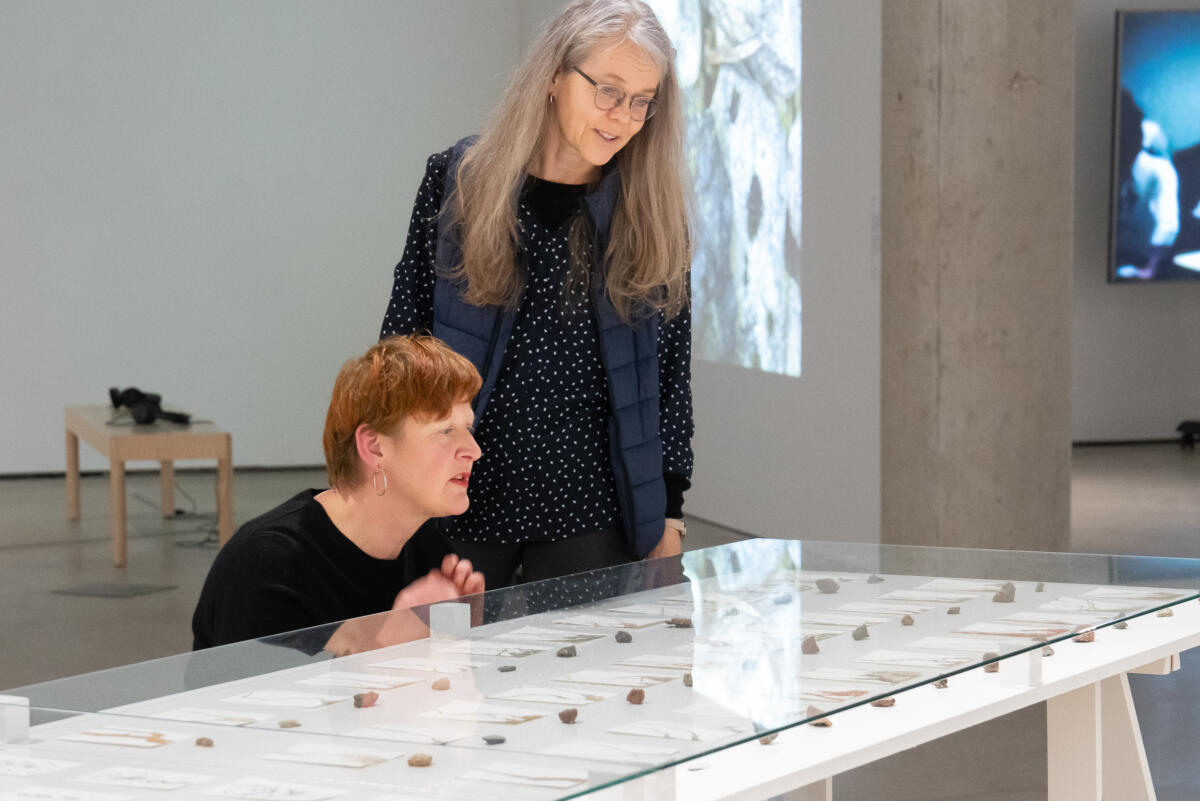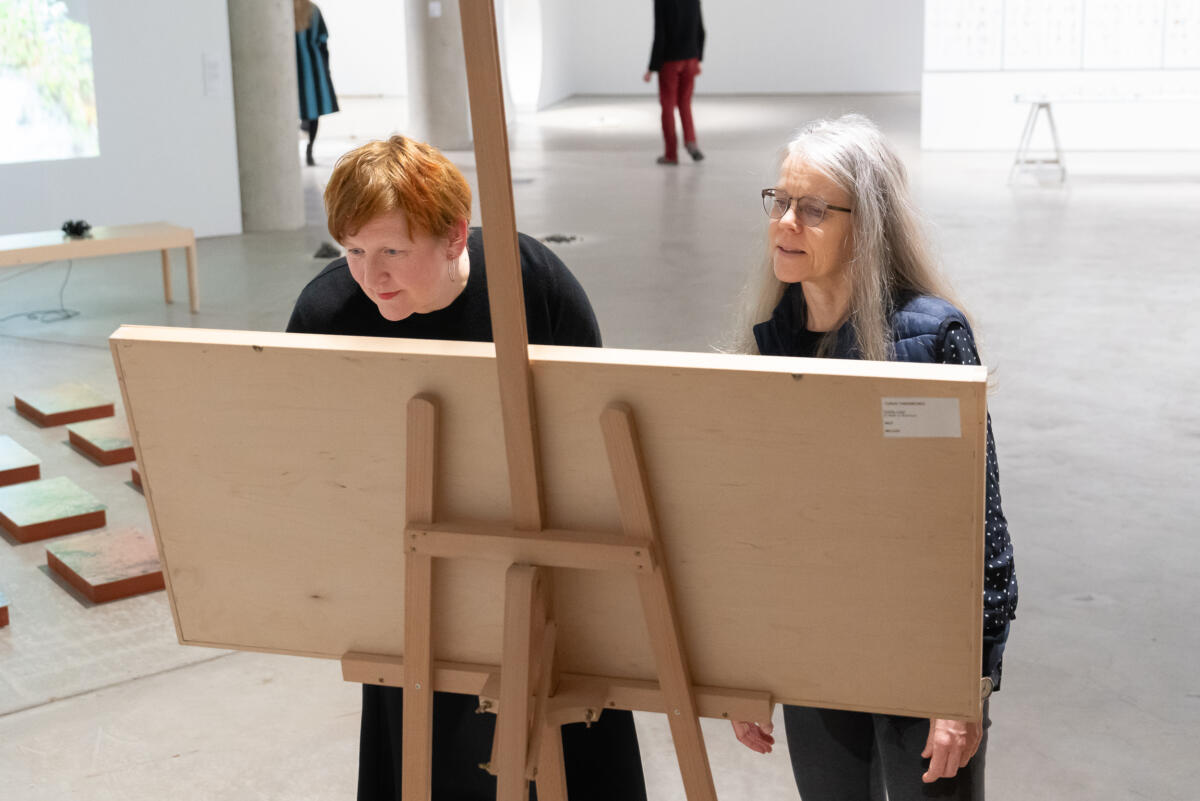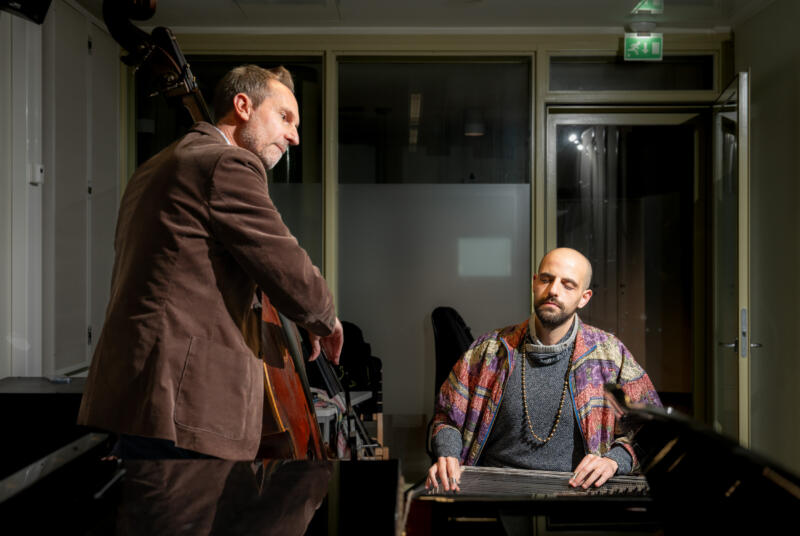Becoming a master: Milja Viita and Tuula Närhinen reminisce Lauri Anttila
“Most of the time, we talked about various phenomena and observations, thoughts that had maybe helped shape the making of a specific work. Lauri encouraged us to look closer and more carefully to our personal living surroundings.”

In this interview series, students and teachers in the arts discuss their shared learning journey. In this particular interview, two Academy of Fine Arts alumni reminisce the late rector and professor Lauri Anttila.
Milja Viita
Tell us who you are and what you do at Uniarts Helsinki
I’m a visual artist, media artist and filmmaker and I work at Uniarts Helsinki’s Academy of Fine Arts from time to time as an hourly-paid teacher. Over the past few years, I have taught a course on filming in daylight where I have gone through the qualities of analogue film with students. The course is quite thorough: we go through all the key stages of the work, including choosing a film, measuring the exposure, and then filming, developing and digitising a 16 mm film. The idea is to grab a camera and go out. I don’t give topics or suggest themes. I have also been available for students even after the course by offering a clinic on analogue film.
I, myself, studied time and space arts in 1998-2005, and Lauri Anttila gave a lecture series called “The basics of visual thinking”. He invited students from all subjects to come together and reflect on and wonder at various phenomena. It was extremely eye-opening and surely influenced the way many of the artists of my generation view art. It felt as if the world suddenly presented itself in a completely new light, and that the world of possibilities around us was unlimited! He prompted us to read The Nature of Light and Colour in the Open Air by Marcel Minnaert, for example, and a book on the architecture of ants that he acquired to the academy’s library was one of the library’s most popular books.
What is special about your teacher as an artist?
I remember that my meetings with Lauri were very inspiring. I can’t recall really talking about artworks per se, as in about their techniques or materials. Most of the time, we talked about various phenomena and observations, thoughts that had maybe helped shape the making of a specific work. Lauri encouraged us to look closer and more carefully to our personal living surroundings.
It would have been completely foreign to commit to one specific technique or material. Even not doing something was an artistic act. An under- or overexposed negative may convey an interesting story about the shooting situation. Lauri was an unusual teacher in the sense that he didn’t want to present his own artistic work to his students during classes. Once when asked to do so, he cried out “that would be completely irresponsible!” The thought behind this, too, was probably leaving things be. He was aware of his position of authority and would rather unravel the world that he was so fascinated by as an artist, as a teacher and as a human. If people wanted to learn about his works, they had to visit one of the exhibitions featuring works by Lauri Anttila the artist.
During my studies, I remember being in a sort of crisis with image, the image dissolved into nonexistence, and I wrote some short snapshots. It felt like my practice just shrank, everything felt meaningless. There would be nothing left to add, nothing to give. At this point of my studies, Lauri provided tremendous support, he seemed to appreciate a need and an intent more than virtuoso deeds.
There was this one time when we were in a forest and he pointed at a branch bent over the path that we were on and pondered that it could create an experience of an arched vault, so we walked under it, leaving richer for the experience.

Tuula Närhinen
What do you remember from the first lecture together?
I started at the Academy of Fine Arts in autumn 1986. I was fresh out of the general upper secondary school and the extent of my art education was art classes at school and Aunt Kylli’s classes for children, the Finnish equivalent of Bob Ross. I intended to become a painter and I thought that studying at an art school would mean working hard with my oil paints with an easel in front of me, but the first thing that Lauri Anttila did was take the entire group of students for visits to the university library, Observatory Hill in Ullanlinna and to the Tuorla Observatory and to walks in the woods in the Nuuksio National Park.
What is special about your teacher as an artist?
During my course of studies, the Academy of Fine Arts became a higher education institution, and it was thanks to Lauri that the focus in the teaching shifted. Instead of prioritising the command of professional techniques and having an atelier practice that emphasised aesthetic[Tn2] composition and craftmanship in a master-apprentice-like relationship, the new orientation involved intellectually more curious contemporary art that questioned the concept of image and challenged the tradition of fine arts. Image-based thinking, or kuvallinen ajattelu in Finnish, was a subject that Lauri came up with, and it explored everything from anthropology and natural sciences to the theory of vision, perspective drawing, conceptual and environmental art and the cultural history of German Romanticism. Lauri Anttila practised what he preached: he made art and wrote masterfully on all the different areas of interest that he had a passion for.
Lauri Anttila’s body of works is characterised by a restrained look, which stems from minimalism, the traditions of conceptual art from the 1970s and simplified and aesthetically restrained modes of expression typical to natural sciences. For Lauri, this “iconoclast attitude” was a matter of principle: photographs, for example, had to be black and white, and his preferred contrast of prints was grey and bland. Since my student years, my own relationship with visual delights to the eye has been considerably more relaxed and permissive. I eagerly practised laborious analogue colour printing techniques to create a series containing hundreds of colour photographs, and despite a systematic method, my works tend to snowball into large-scale installations where extravagant colours, materials or shapes are nothing out of the ordinary. The visual charm of the image is still important to me, and I don’t think visual pleasures need to be abandoned even when art involves research. Later, I was happy to notice that Lauri actually changed his stance on colours and the aesthetic of a photograph. For example, in the series Colors. Värien läpinäkyvyydestä (1996) he had fun with the blaze of colours of plants – without compromising his research endeavours.
What kind of things have you learned from your teacher?
Perhaps the most important thing I learned from Lauri has to do with the fact that visual perceptions and the operation of a photographic camera – or anything related to seeing and image-making – shouldn’t be taken for granted or adopted without questioning. Through his own example, Lauri encouraged me to take action and boldly look into even matters that were difficult, regardless of how intellectually challenging or complicated these topic areas may have first seemed. Library resources and research results aren’t meant for just other researchers or experts: information is equally available to anyone at all – also to that insecure art student who dares to ask questions. In my visual artist’s practice and in my role as a visiting researcher at Uniarts Helsinki, I still walk along the paths that Lauri paved. Following Anttila’s footsteps, my works focus on the epistemic in processes of inscription such as (photo)graphic tracings or recordings.
Sometimes, Lauri’s pedagogy may have had its flipside. Almost no matter what the student’s work was like, Lauri managed to thematically link it to his personal research interests, and his accounts were practically never-ending – and in that torrent, sometimes what happened was that a faint signal that was important for the student but aimed at a different direction was left unconfirmed or even completely ignored. For the most part, however, the outcome was positive for both of the parties: Lauri got to tell his story, and the student’s eyes were opened to a whole new perspective into the premises of their own practice.
